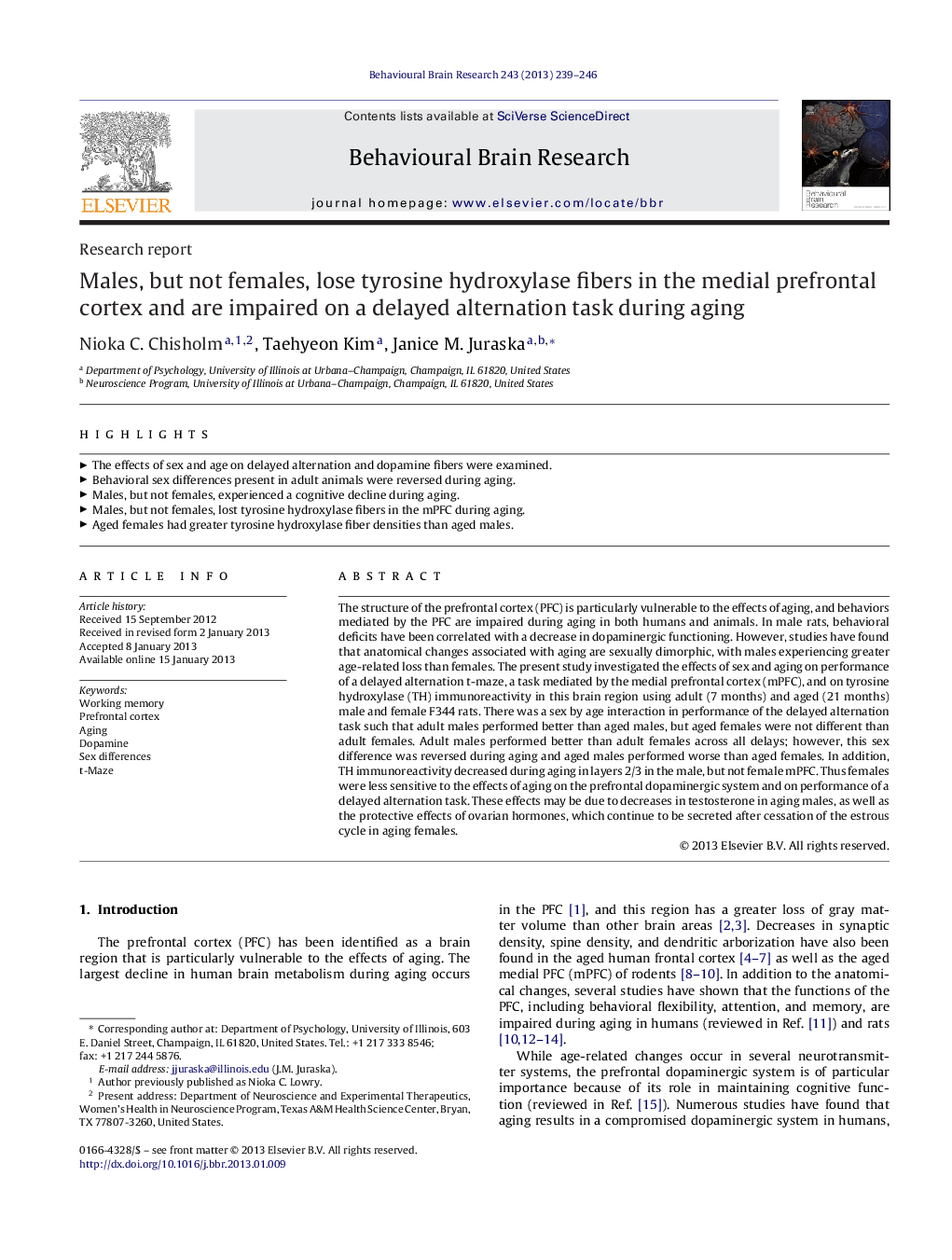| Article ID | Journal | Published Year | Pages | File Type |
|---|---|---|---|---|
| 4312773 | Behavioural Brain Research | 2013 | 8 Pages |
The structure of the prefrontal cortex (PFC) is particularly vulnerable to the effects of aging, and behaviors mediated by the PFC are impaired during aging in both humans and animals. In male rats, behavioral deficits have been correlated with a decrease in dopaminergic functioning. However, studies have found that anatomical changes associated with aging are sexually dimorphic, with males experiencing greater age-related loss than females. The present study investigated the effects of sex and aging on performance of a delayed alternation t-maze, a task mediated by the medial prefrontal cortex (mPFC), and on tyrosine hydroxylase (TH) immunoreactivity in this brain region using adult (7 months) and aged (21 months) male and female F344 rats. There was a sex by age interaction in performance of the delayed alternation task such that adult males performed better than aged males, but aged females were not different than adult females. Adult males performed better than adult females across all delays; however, this sex difference was reversed during aging and aged males performed worse than aged females. In addition, TH immunoreactivity decreased during aging in layers 2/3 in the male, but not female mPFC. Thus females were less sensitive to the effects of aging on the prefrontal dopaminergic system and on performance of a delayed alternation task. These effects may be due to decreases in testosterone in aging males, as well as the protective effects of ovarian hormones, which continue to be secreted after cessation of the estrous cycle in aging females.
► The effects of sex and age on delayed alternation and dopamine fibers were examined. ► Behavioral sex differences present in adult animals were reversed during aging. ► Males, but not females, experienced a cognitive decline during aging. ► Males, but not females, lost tyrosine hydroxylase fibers in the mPFC during aging. ► Aged females had greater tyrosine hydroxylase fiber densities than aged males.
